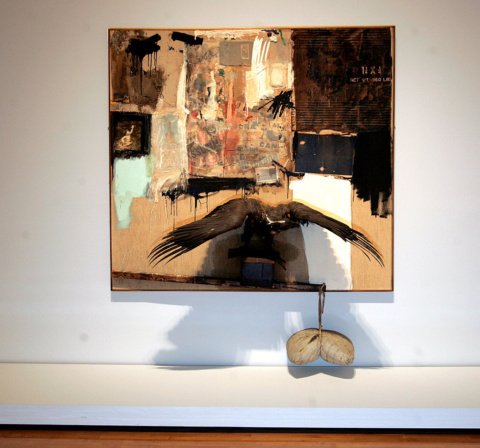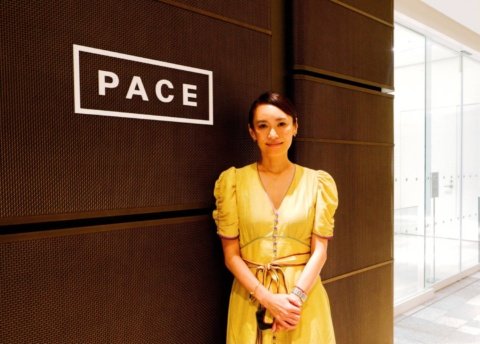
As the art world shifts into gear for the fall season, collectors find themselves preparing for a whirlwind of fairs and auctions stretching from New York to London and Paris. The prospect of acquiring new pieces in such a frenzied environment is as exhilarating as it is daunting. With so many events packed into a few short months, experienced and novice collectors alike must approach the season with clear strategy and focus. The fall 2024 art season is defined by both post-pandemic recovery and a tightening global market. After the 2021 through 2022 art market boom, I’ve observed a slowdown, particularly among speculative buyers who entered the market during the pandemic. However, this contraction could benefit seasoned collectors, who see opportunities for strategic acquisitions.
Key art fairs to watch
This fall brings an impressive roster of fairs, offering collectors unique access to galleries, artists and curators:
- Frieze London (October 9–13, 2024): One of the most influential contemporary art fairs, Frieze London is an essential stop for collectors seeking fresh ideas and perspectives from both established and emerging artists. This year, Frieze is highlighting curatorial sections Artist-to-Artist and Smoke through a reconfigured fair layout and entrance that provides these curated areas greater prominence.
- Frieze Masters (October 9–13, 2024): Known for creating the feeling of a collection of small museum-like presentations, Frieze Masters presents historic works spanning antiquities to the 20th century, bridging the gap between past and present. This year, the fair will debut an artist-centered approach with an expanded Studio section and a refined floor plan intended to provide thoughtful cross-object dialogue.
- Art Basel Paris (October 17–20, 2024): This premier event brings together top-tier galleries from around the world, framed by the rich cultural backdrop of Paris. Set in the newly renovated Grand Palais (with 38 percent more surface area than last year’s temporary venue), the fair follows an energetic Olympic summer in the city. This year, the fair introduces a new section titled Premise, which will showcase individual projects from lesser-known artists who challenge the traditional art historical canon.
- The Art Show (October 30–November 2, 2024): Organized annually by the ADAA (the Art Dealers Association of America), The Art Show features presentations from the most respected gallerists in the United States, with a rich mix of both historical and contemporary art. Besides their membership in the ADAA, the gallerists must present their concepts for The Art Show to the selection committee months in advance in order to secure a coveted spot at the Park Avenue Armory venue—so it is always a richly rewarding and diverse experience for collectors.
Each of these fairs, alongside others like FIAC and 1-54 Contemporary African Art Fair, provides an opportunity to encounter an array of works across mediums and styles, from blue-chip artists to lesser-known talents.
What should collectors know?
Should you be listening to the headlines?
Amidst the swirl of headlines about market trends and economic volatility, it’s essential to focus on your own collecting goals. While reports on market highs and lows can provide valuable context to a particular time frame, collecting is ultimately a long-term personal pursuit driven by individual taste and vision. The key is to filter out the noise and maintain clarity about what you want from your collection, not just what the clickbait is pushing you to feel.
Market correction, high interest rates and “speculation fatigue”
One of the most significant trends affecting the fall season is market fatigue coupled with high interest rates. The Financial Times and The Art Newspaper have both reported how rising borrowing costs are causing some collectors to be more cautious, particularly those who use art-secured loans. Additionally, softening resale prices for contemporary and speculative art are prompting a reassessment of value, making it a selective buyer’s market.
- Market correction and speculation fatigue: After a pandemic-era boom in the market for many contemporary artists, we are seeing the more speculative buyers—those trading for pure profit and not collecting—pulling back as prices for younger, trendy artists have cooled. This has led to a focus on more historically significant artists with stable market performance, including modern and post-war artists. Auction results over the past year, including at Sotheby’s and Christie’s, have shown that works by established artists like Pablo Picasso, Joan Mitchell and Francis Bacon continue to perform well, often exceeding expectations, while certain contemporary artists whose work experienced a fast price trajectory in the last three years are seeing more moderate growth or corrections since spring 2024.
- Auction trends: Recent auctions have revealed a bifurcation in the market. While post-war and modern artists consistently attract high prices, some contemporary artists, especially those whose markets were driven by speculation, have seen more volatility. The September 2023 sales in London and New York reflected this trend, with blue-chip artists securing strong results while the market for younger, emerging artists displayed more modest performances.
- Focus on underrepresented artists: There is also a growing interest in historically underrepresented artists, such as women, artists of color and artists from emerging regions like Africa, Latin America and Asia. Major institutions and private collectors are beginning to reevaluate these artists, not only for social and cultural reasons but because of their potential for sustained market growth. This trend is also seen in recent auction results and gallery representation, as collectors seek deeper narratives and lasting artistic significance.
The collector’s approach
Discovering your collecting style
Building a collection is an evolving process. Start by reflecting on what kind of art moves you. What colors, themes, or forms draw you in? Spending time in galleries, at exhibitions, or even reviewing past collections can help you identify your preferences. When attending fairs, resist the urge to buy impulsively. Take a full walk-through before returning to pieces that stood out, giving yourself time to approach each acquisition with perspective.
Setting goals: focus and taste
Before diving into any art fair, clarity is key. What are your collecting goals? Are you seeking works by specific artists, filling gaps in your collection, or perhaps exploring new genres? For new collectors, it’s helpful to start broadly—focusing on acquiring works that resonate personally or expand your understanding of contemporary art. Over time, as your taste sharpens, you’ll likely gravitate toward more specific objectives.
The importance of setting a budget
Whether purchasing works by blue-chip artists or emerging talents, setting a clear budget is critical. Fairs can create a sense of urgency, but collectors who establish financial parameters ahead of time tend to make better decisions. Remember to account for additional costs—such as framing, shipping and taxes—that accompany art purchases. At major fairs like Art Basel and Frieze, blue-chip works can start at $100,000 and soar into the millions. However, these fairs also offer works by emerging artists, which might range between $10,000 and $50,000. At smaller fairs, such as 1-54 Contemporary African Art Fair, collectors can find works in the $5,000 to $20,000 range, particularly from emerging markets.
Collectors can generally expect additional costs of 10 to 20 percent on top of the purchase price for framing, shipping and taxes. For high-value pieces, shipping costs can be higher, particularly if the work requires specialized handling or international transit. Sales tax rates vary by location, but collectors purchasing at fairs in New York, for example, should be prepared for a sales tax of around 8.875 percent. Insurance is another potential cost to factor in, especially for higher-value acquisitions.
Building a thoughtful collection
Art collecting is an expression of personal vision, a narrative shaped by taste, curiosity and a strategic approach. As the fall season brings a wealth of opportunities, success in the art market is about more than just acquiring works—it’s about building a collection that reflects your unique perspective. The key to navigating this dynamic season lies in clarity and preparation. Whether you are just beginning your collecting journey or seeking to add to an established collection, the strategies outlined here will help you approach the fairs and auctions of fall 2024 with confidence.
Resources for collectors
There are several key resources that collectors can use to prepare for fairs and auctions:
- Auction databases: Platforms like Artnet and Artprice provide historical auction data and price benchmarks, allowing collectors to research an artist’s market trajectory.
- Gallery and fair websites: Many galleries now offer online viewing rooms for fairs, allowing collectors to preview works ahead of time.
- Consulting with an art advisor: For tailored guidance, working with an advisor can help collectors navigate market trends and find opportunities that align with their goals. Advisors often have access to private sales and can offer insider perspectives on pricing and provenance.
Case study—seasoned collector: Imagine a seasoned collector looking to expand their collection at Frieze London. They might focus on a historically underrepresented mid-career artist whose market has shown steady growth. By leveraging years of market knowledge, they may secure a piece through pre-fair research, attending the fair with clear objectives and a focus on investment potential, heritage and institutional importance.
Case study—new collector: Conversely, a new collector might approach The Art Show with broad goals, seeking to diversify their collection with contemporary pieces. They could benefit from visiting a range of booths to refine their taste, consulting an art advisor and setting a more flexible budget. A new collector would likely focus on pieces within a lower price range, prioritizing discovery and education over immediate financial return.
A systematic approach to art fairs
Navigating fairs and auctions requires preparation. Having spent years refining my approach, I rely on a detailed system to ensure my clients get the most out of these events:
- Pre-fair research: Before attending, I study the participating galleries and artists, identifying those aligned with my clients’ interests. Auction catalogs and past sales results also provide context for understanding pricing and value trajectories.
- Creating a targeted list: I work with clients to curate a list of works to see in person, focusing on pieces that fill gaps in their collections or align with their tastes and budgets.
- On-the-ground strategy: Once at the fair, I prioritize booths of interest, engaging gallery representatives to gather additional insights. Meeting artists, when possible, adds depth to the collecting process.
- Post-fair evaluation: After the fair, I reassess potential acquisitions, considering condition, provenance and investment potential before moving forward


